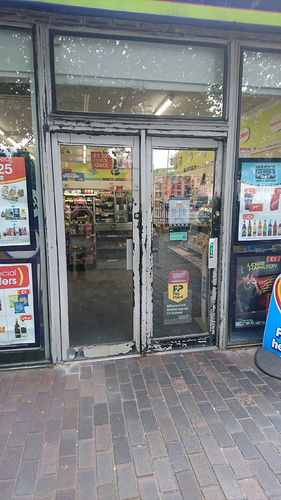Hi everyone! I’m a bit late getting started here, given that Week 1 coincided with the week of a major conference I had been preparing to present at. Excited to jump right in now that I’ve recovered from my awful travel schedule. 
I’m already glad that I am reading this book, seeing as my skills/ties related to UX are more compatible with UX research than UX design. I feel like I’ve learned a lot from this first chapter already!
Key Points
To summarize the major chapter points into chunks:
-
Machines are logical and require accuracy and precision; however, people have expectations and tend to struggle with precision/accuracy. To design effectively, we must accept people for who they are rather than who we wish them to be. Even experts make errors, and anticipated errors should influence design. Human-centered design (HCD) accommodates for people’s needs, capabilities, and behaviors.
-
The two most important characteristics of good design are discoverability (knowing what actions are possible and when/how to perform them) and understanding (knowing how the product is supposed to be used, in terms of controls, settings, etc.).
-
_Discoverabilit_y manifests through the effective application of five psychological principles: affordances (the presence of or prevention of a relationship between the properties of a physical object–such as a product–and the capabilities of an interacting agent–be it a person, animal, etc.), signifiers (which take the possible actions conveyed by affordances and provide clues as to where those actions should take place), constraints (I think this is the prevention of attempted actions?), mappings (the relationship between the elements of a product, such as between buttons on a smartphone screen and what those buttons actually do), and feedback (appropriately communicating the results of actions so that users are informed but not annoyed, distracted, etc.).
-
Understanding manifests through the effective application of the conceptual model (mental models of how things work that can be used to predict how things will behave and to know what to do when the wrong action is selected).
Memorable Quotes
“No matter how brilliant the product, if people cannot use it, it will receive poor reviews. It is up to the designer to provide the appropriate information to make the product understandable and usable.”
“Design requires the cooperative efforts of multiple disciplines…quite often each discipline believes its distinct contribution to be most important…the hard part is to convince people to understand the viewpoints of others, to abandon their disciplinary viewpoint to think of the design from the viewpoints of the person who buys the product and those who use it, often different people…It is when the disciplines operate independently of one another that major clashes and deficiencies occur.”
Takeaways and Reactions
Does anyone else remember the show Top Design (which was on the Bravo network, for those of you that have ever had Bravo)? It was an interior design reality show competition. I remembered being excited by the premise, but upon watching it I remembered thinking that me and this show just didn’t “click” for some reason. Designs that were heavily praised came across to my uncultured eye as looking…well, rather bland and unexciting. “What on earth is so special about that boring room?”, I wondered. The show didn’t last past the second season–and upon reading Ch. 1 of this book, I started to understand why: That show was a show for other designers, not a show for consumers (the viewers). Designs that were being praised were winning on their technical merits, but those merits weren’t translating into an exciting experience for viewers.
On a related note, this chapter did an excellent job of illustrating the potential points of conflict between designers and numerous other members of a product design team. As someone working as a change agent in my current job, these cues are important to know…and just as UXers are expected to have empathy for users, so too must we have empathy for our colleagues from other disciplines. For example, I can understand how frustrating it must be to follow the “rules” of developer logic to create a knockout draft of a product…only to be told that people simply can’t understand it or “don’t like” it. It can be demoralizing when your best ideas aren’t embraced by consumers, and I can see how it would be tempting to respond defensively by calling users “stupid”. (I’m not saying that’s acceptable, just that I recognize it as a human response to frustration.) It seems that the right tone, and a shared sense of a human-centered design mission, absolutely must be put in place and enforced early on if product design teams are to be successful.
 . What made me check where I was in the book was the introduction of a new concept and the fact that the chapter felt very long.
. What made me check where I was in the book was the introduction of a new concept and the fact that the chapter felt very long.





 those…
those…